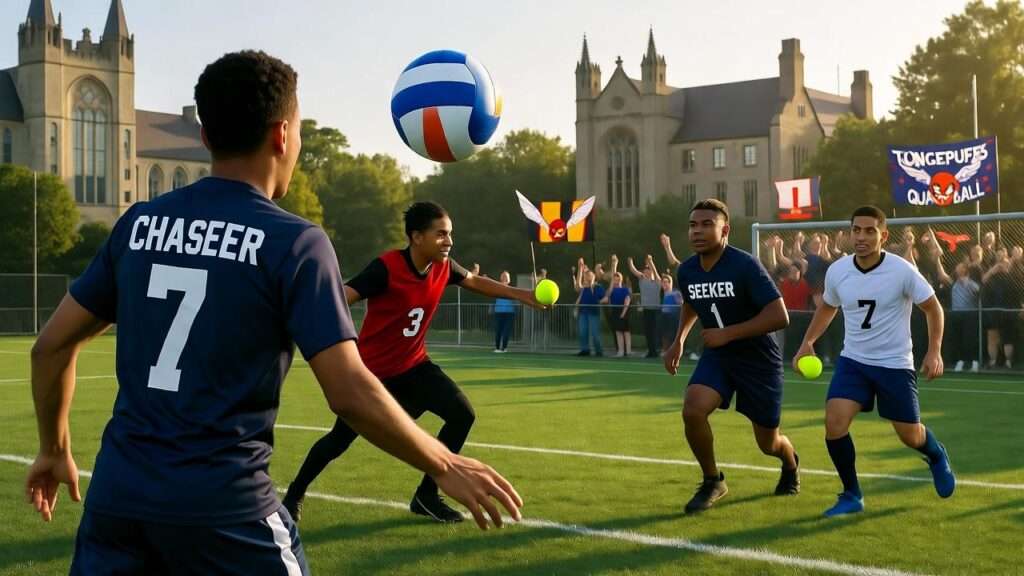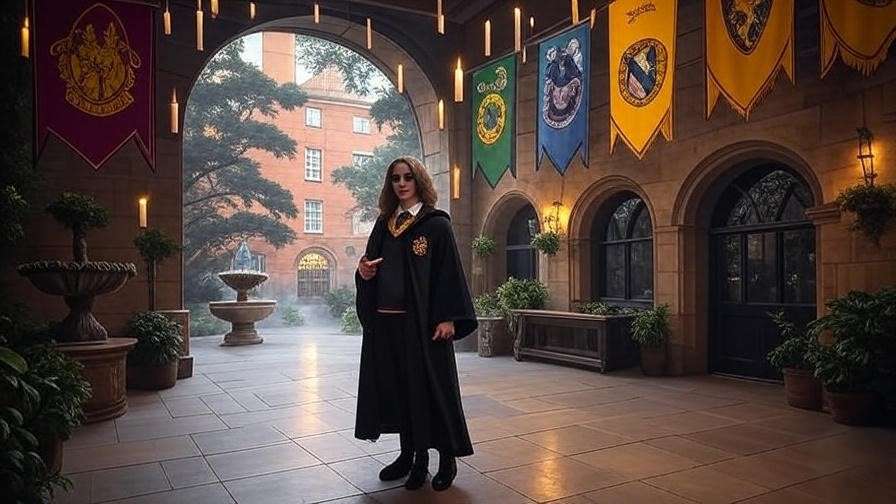Ever imagined soaring through a Quidditch match, broom in hand, chasing the Golden Snitch while earning your college degree? For Harry Potter fans and thrill-seekers alike, this dream is reality at colleges with Quidditch teams across the U.S. Known as Quadball in its modern, muggle-friendly form, this full-contact, co-ed sport blends athleticism with wizarding charm, offering students a unique way to build community, stay active, and live out their Hogwarts fantasies. Whether you’re a high schooler eyeing universities, a current student seeking extracurriculars, or a Potter enthusiast curious about muggle Quidditch, this guide delivers everything you need: a curated list of top colleges with Quidditch teams, gameplay breakdowns, and insider tips on joining the action. Backed by insights from US Quadball, player testimonials, and historical records, this article is your Portkey to discovering where academic ambition meets magical athleticism.
Why Quidditch? The Magic of a Muggle Sport on Campus
A Sport for Everyone
Quidditch, now rebranded as Quadball, is a rare gem in college sports. Its gender-neutral rules ensure inclusivity, requiring teams to field at least three players of a different gender (or non-binary equivalent) at all times. This makes it a haven for diverse rosters, from die-hard Potter fans to athletes craving a fresh challenge. As a University of Rochester player noted, “Quidditch bridges the gap between nerds and jocks—everyone’s welcome, no experience needed.” Unlike traditional sports, you don’t need years of training to shine—just enthusiasm and a willingness to run with a broom between your legs.
Benefits Beyond the Pitch
Beyond the thrill of dodging Bludgers, Quadball fosters skills that resonate in and out of college. Players report improved physical fitness, mental resilience, and teamwork, with practices burning up to 400 calories per hour. The sport’s community-driven nature builds lifelong friendships, as seen in Tufts University’s tight-knit squad, which hosts post-game “Butterbeer” socials. Studies on extracurriculars, like those from the Journal of College Student Development, show activities like Quidditch enhance leadership and stress management—key for navigating college life.
Why Colleges Love It
Universities embrace Quidditch as a recruitment tool for creative, collaborative students. With over 150 colleges hosting teams, per US Quadball’s 2025 directory, the sport signals a campus’s commitment to vibrant, inclusive extracurriculars. Schools like Emerson College leverage their teams’ national visibility to attract applicants who value innovation. Admissions officers often highlight unique clubs like Quidditch to showcase campus culture, making it a draw for prospective students seeking more than just academics.
Expert Insight: “Quadball’s growth reflects its appeal to students who want both fun and purpose,” says Amanda Dallas, US Quadball’s Community Outreach Director. “It’s a sport that builds character and campus pride.”
The Origins of Real-World Quidditch
From Hogwarts to Middlebury
Quidditch leaped from J.K. Rowling’s pages to reality in 2005 at Middlebury College, Vermont. Freshmen Xander Manshel and Alex Benepe, inspired by Harry Potter and the Philosopher’s Stone, crafted a muggle version of the game for weekend fun. Their rules swapped flying for running, with PVC pipe “brooms” and a volleyball as the Quaffle. The first match, played on a grassy field, drew a curious crowd, sparking a movement. By 2007, Middlebury hosted the inaugural Quidditch World Cup against Vassar College, with just 20 players total.
Evolution to Quadball
In 2022, the sport rebranded to Quadball, a move by the International Quadball Association (IQA) to distance from Harry Potter’s intellectual property and emphasize its standalone identity. The name nods to the four balls used (Quaffle, two Bludgers, Snitch), reflecting its evolution into a globally recognized sport. Today, the IQA oversees 20 national federations, with college teams forming the backbone of its 4,000+ registered players worldwide.
Milestones in College Quidditch
From Middlebury’s five consecutive World Cup wins (2007–2011) to the sport’s media buzz via MTV and PBS, college Quidditch has hit major milestones. By 2014, USA Today reported 200 clubs nationwide, driven by low entry barriers and high engagement. The US Quadball Cup, now an annual highlight, draws dozens of college teams, with regional championships feeding into nationals. Transylvania University’s 2010 MTV feature put smaller schools on the map, proving Quidditch’s universal appeal.
How Quidditch Works: Rules of the Muggle Game
Core Gameplay and Positions
Quadball is a chaotic blend of basketball, dodgeball, rugby, and tag, played on a 60×33-foot oval with three hoops per end (3ft, 5ft, 7ft). Matches last 18 minutes or until the Snitch is caught. Here’s the breakdown:
- Chasers (3): Score by throwing a volleyball (Quaffle) through hoops for 10 points.
- Keeper (1): Defends hoops, akin to a soccer goalie, but can score too.
- Beaters (2): Throw tennis balls (Bludgers) to disrupt opponents, forcing a hit player to drop the Quaffle and tag a teammate.
- Seeker (1): Chases a tennis ball in a sock (Snitch), carried by a neutral Snitch Runner. Catching it scores 30 points and ends the game (after 100 total points).
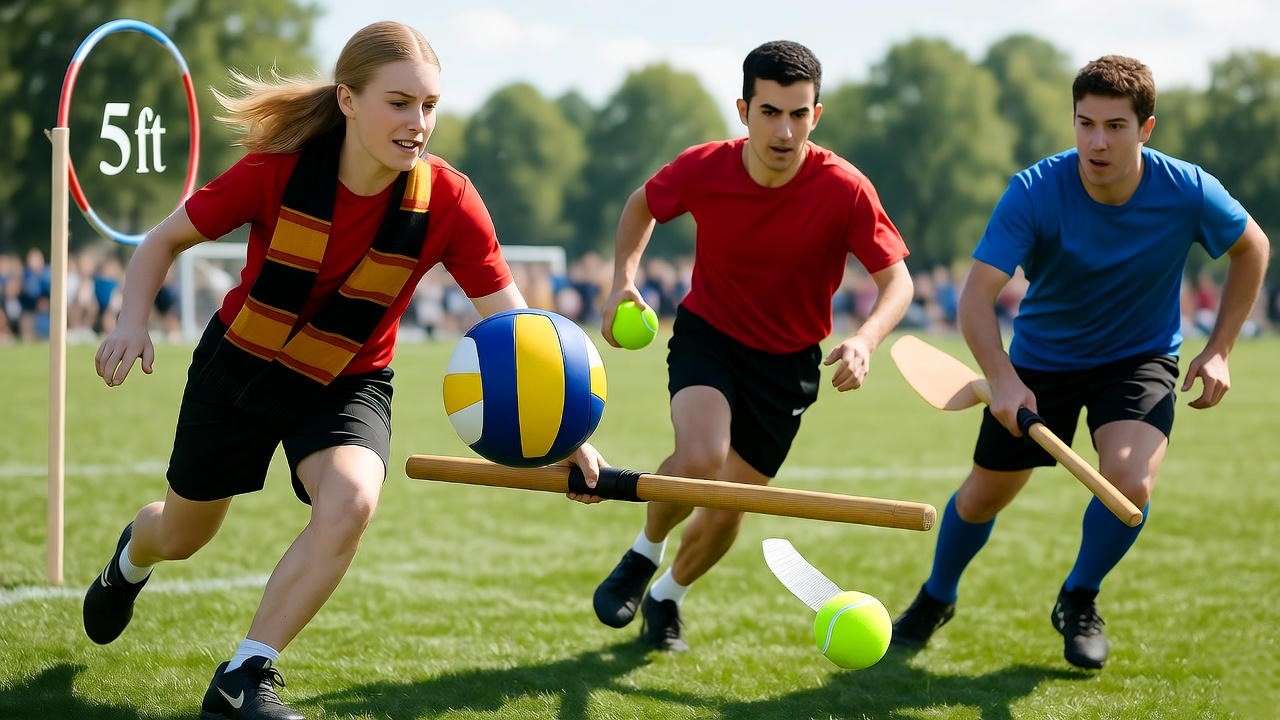
Teams field seven players, with unlimited subs, and must keep brooms between legs at all times. Tackling is allowed (shoulder-to-shoulder), making it full-contact yet regulated.
Unique College Adaptations
College teams balance competitive and intramural play. Competitive squads, like University of Texas at Austin, follow US Quadball’s Rulebook 13, with strict refereeing. Intramural teams, like Middlebury’s, ease tackling rules for beginners, prioritizing fun. Most campuses host open practices, welcoming novices to try Chaser or Beater roles without pressure.
Safety and Physicality
Despite its intensity, Quadball prioritizes safety. Protective gear (e.g., knee pads) and trained refs minimize risks. A 2019 USQ report noted low injury rates, with bruises and minor sprains being the most common. Occidental College’s team, for instance, enforces warm-ups and gear checks to ensure safe play. Players describe the physicality as “invigorating but controlled,” akin to rugby with softer impacts.
Tip Box:
- Practice sprinting with a broom to build agility.
- Wear padded gloves for Beater throws.
- Join open practices to test roles before committing.
Top 10 Colleges with Quidditch Teams
Middlebury College (Vermont)
- Team: Middlebury Panthers
- Founded: 2005
- Notable: Birthplace of Quidditch, won first five World Cups. Now intramural-focused, with Hogwarts-themed matches.
- Why Join?: Legacy and laid-back vibe suit Potter purists.
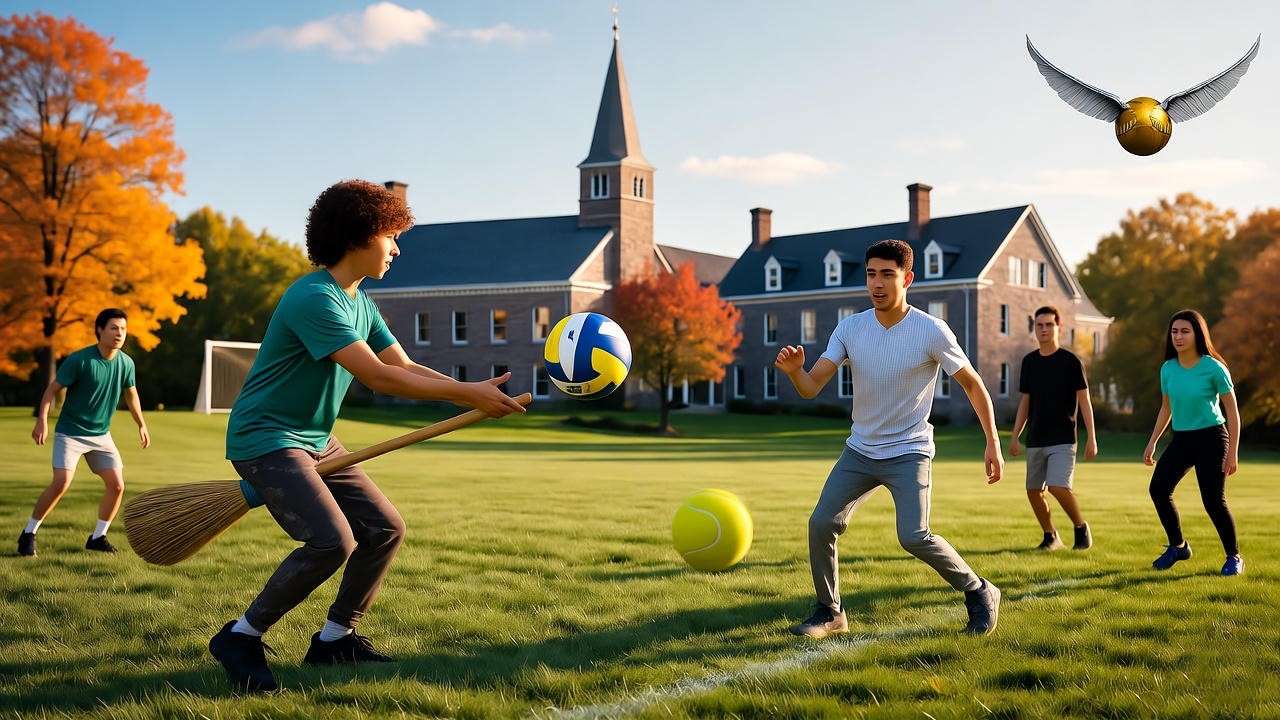
University of Texas at Austin
- Team: Texas Longhorns Quadball
- Founded: 2008
- Notable: Multiple USQ Cup appearances, Slytherin-themed intramurals.
- Why Join?: Competitive edge with vibrant campus culture.
Emerson College (Massachusetts)
- Team: Emerson Quidditch
- Founded: 2009
- Notable: Final-four finishes at USQ Cup, small-school grit.
- Why Join?: Creative community, perfect for artsy athletes.
University of Rochester (New York)
- Team: Rochester Yellowjackets
- Founded: 2007
- Notable: Championship pedigree, inclusive roster.
- Why Join?: Strong team spirit and regional dominance.
Vassar College (New York)
- Team: Vassar Quidditch
- Founded: 2007
- Notable: Early adopter, consistent Northeast contender.
- Why Join?: Tight-knit liberal arts vibe.
Tufts University (Massachusetts)
- Team: Tufts Tufflepuffs
- Founded: 2008
- Notable: Hosts regional tournaments, community-focused.
- Why Join?: Social events like “Butterbeer” nights.
Marquette University (Wisconsin)
- Team: Marquette Quadball
- Founded: 2010
- Notable: Midwest powerhouse, hosts annual tournaments.
- Why Join?: Welcoming to new players, travel opportunities.
University of Maryland
- Team: Maryland Terrapins Quadball
- Founded: 2009
- Notable: Large-scale program, national media coverage.
- Why Join?: High visibility and competitive play.
Transylvania University (Kentucky)
- Team: Transy Quidditch
- Founded: 2009
- Notable: Gained fame via 2010 MTV feature.
- Why Join?: Quirky Southern charm, small-school pride.
Oberlin College (Ohio)
- Team: Oberlin Quidditch
- Founded: 2010
- Notable: Passionate fanbase, liberal arts energy.
- Why Join?: Creative, inclusive team culture.
| College | Team Name | Founded | Notable Achievements |
|---|---|---|---|
| Middlebury | Panthers | 2005 | Founded Quidditch, 5 World Cups |
| UT-Austin | Longhorns | 2008 | USQ Cup contender |
| Emerson | Quidditch | 2009 | Final-four finishes |
| Rochester | Yellowjackets | 2007 | Championship pedigree |
| Vassar | Quidditch | 2007 | Early adopter |
| Tufts | Tufflepuffs | 2008 | Regional host |
| Marquette | Quadball | 2010 | Midwest leader |
| Maryland | Terrapins | 2009 | National visibility |
| Transylvania | Quidditch | 2009 | MTV feature |
| Oberlin | Quidditch | 2010 | Passionate fanbase |
How to Join a College Quidditch Team
Finding a Team
Check US Quadball’s team directory (usquadball.org) or college club pages. Most schools list Quidditch under student organizations. Social media (e.g., Instagram, X) often reveals active teams, like Marquette’s vibrant posts.
What to Expect at Tryouts
Tryouts are typically open, requiring no prior experience. Emerson’s team, for example, hosts “learn-to-play” days where coaches teach rules. Expect drills (e.g., passing, dodging) and scrimmages. A Tufts player shared, “I showed up nervous, but everyone cheered me on—it felt like family.”
Time and Cost Commitment
Practices run 2–3 times weekly, 1–2 hours each. Competitive teams travel for regionals (2–3 weekends yearly), with costs often covered by club fees ($20–$50/semester). Brooms cost ~$10, and most teams provide balls.
Expert Tip: “Start as a Chaser to learn the flow,” advises Sarah Johnson, a USQ coach. “Conditioning helps, but heart matters most.”
The Culture of College Quidditch
Fandom Meets Fitness
Teams lean into Harry Potter themes, with names like “Slytherin” or “Tufflepuffs.” Practices often end with themed socials, like Oberlin’s “Hogsmeade Nights.” Yet, the sport demands fitness—players sprint up to 5 mph with brooms, blending cardio and strategy.
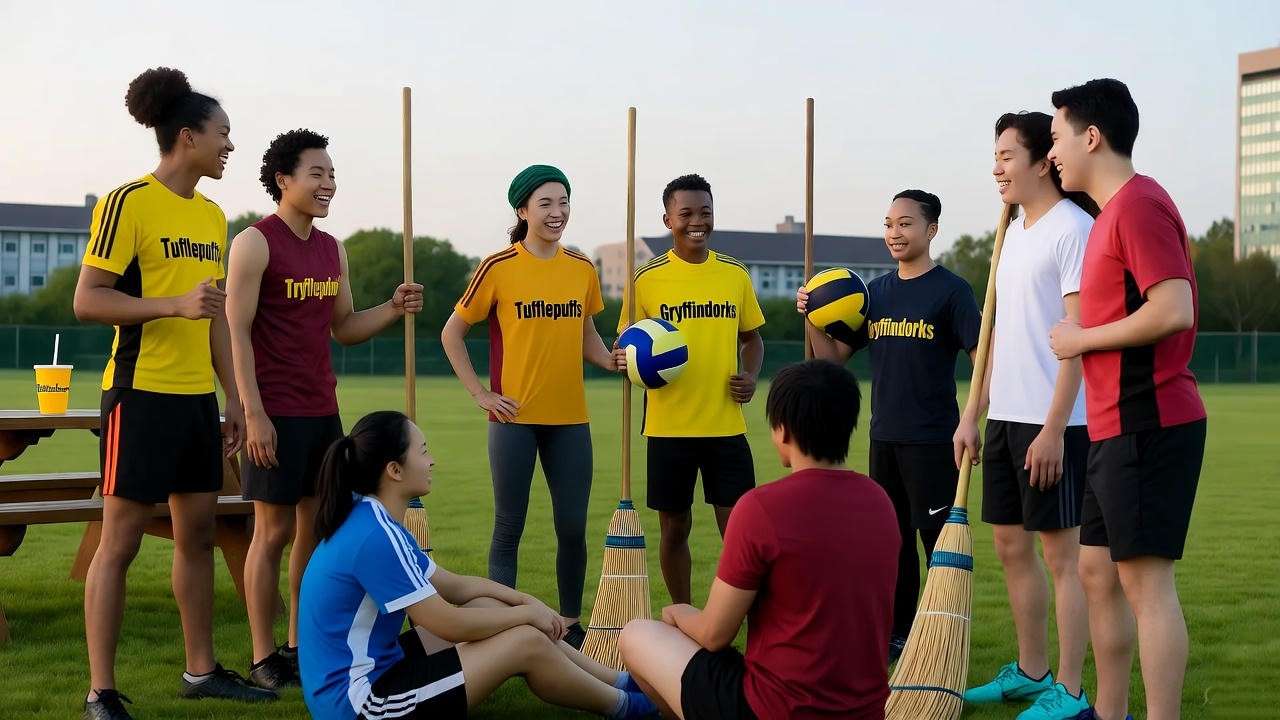
Community and Inclusivity
Gender-neutral rules ensure diverse rosters. Maryland’s team, for instance, prides itself on 50% non-male players. This inclusivity fosters tight bonds, with players describing teammates as “chosen family.”
Tournaments and Travel
Regionals (e.g., Northeast, Midwest) lead to the US Quadball Cup, a national showcase. Teams like UT-Austin share stories of road-tripping to tournaments, bonding over shared hotel rooms and Snitch chases.
Visual Suggestion: Embed a US Quadball highlight reel to showcase gameplay energy.
Why Quidditch Matters for Your College Experience
Building Lifelong Skills
Quidditch hones leadership, communication, and resilience. A 2023 study from the Journal of Higher Education found extracurriculars like Quidditch boost retention rates by 15% due to community ties.
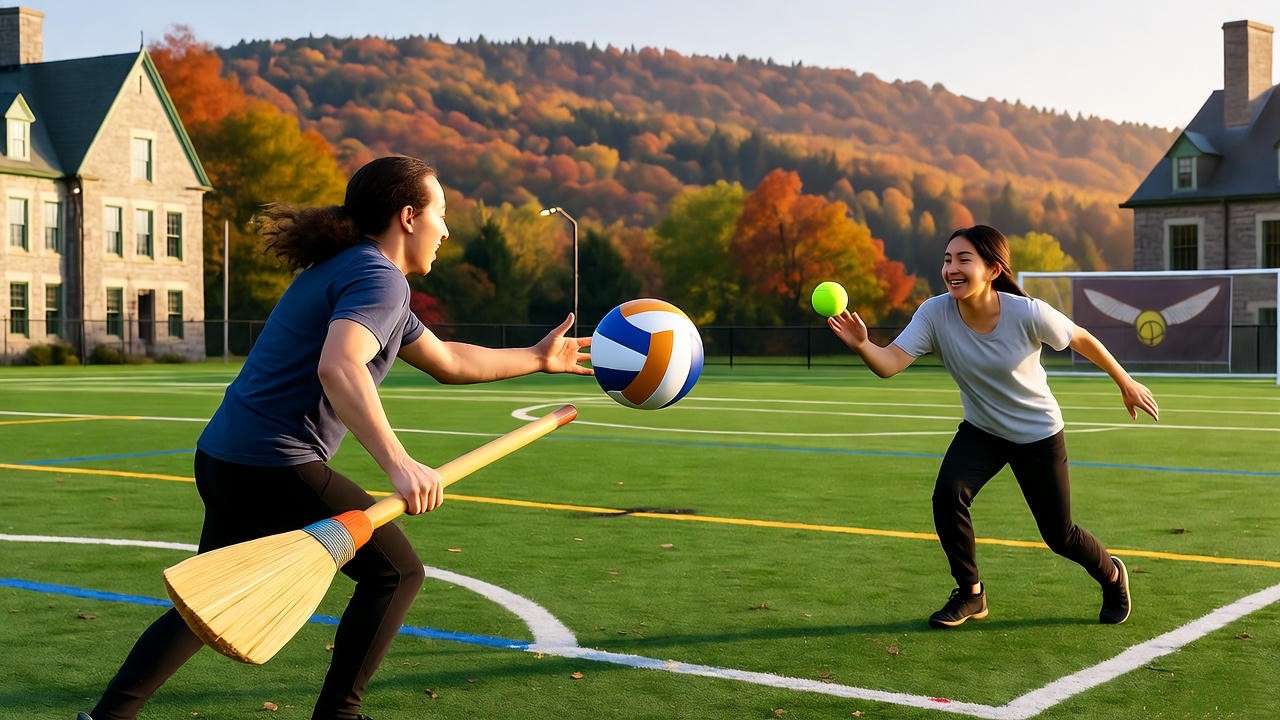
Standing Out in Admissions
Admissions officers value unique activities. Quidditch signals creativity and teamwork, qualities schools like Vassar prioritize in holistic reviews.
Post-Grad Benefits
Alumni networks from teams like Rochester’s connect players to jobs and friendships. Skills like strategy and collaboration translate to careers in management or community organizing.
Challenges and Future of College Quidditch
Overcoming Stigma
Some dismiss Quidditch as “nerdy,” but players like those at Maryland counter this with athletic prowess, earning respect via tournament wins.
Funding and Support
Teams rely on student fees, with budgets of $500–$2,000 yearly. Top programs, like UT-Austin, secure university grants to offset travel costs.
The Road to the Olympics?
The IQA aims for mainstream recognition, with Quadball eyeing collegiate sports status. “It’s not just a game—it’s a movement,” says IQA’s Alex Benepe.
FAQ Section
Q1: Do you need to be a Harry Potter fan to play Quidditch?
No—athletic interest suffices, though fandom adds fun. Many players join for the sport alone.
Q2: Are there scholarships for Quidditch players?
Not yet, but club funding often covers costs. Check with teams for details.
Q3: How safe is college Quidditch?
Safe with gear and refs. Injuries are rare (mostly bruises), per USQ data.
Q4: Can international students join U.S. college Quidditch teams?
Yes, most teams welcome all enrolled students. Contact clubs directly.
Q5: How do I start a Quidditch team at my college?
Visit usquadball.org for startup guides and connect with student affairs.
From Middlebury’s pioneering pitch to UT-Austin’s competitive dominance, colleges with Quidditch teams offer a magical blend of sport, fandom, and community. Whether you’re chasing the Snitch or cheering from the sidelines, these programs enrich college life. Explore US Quadball’s directory, visit campuses, or start your own team to bring the wizarding world to life. Share your favorite Harry Potter-inspired college activities in the comments!

